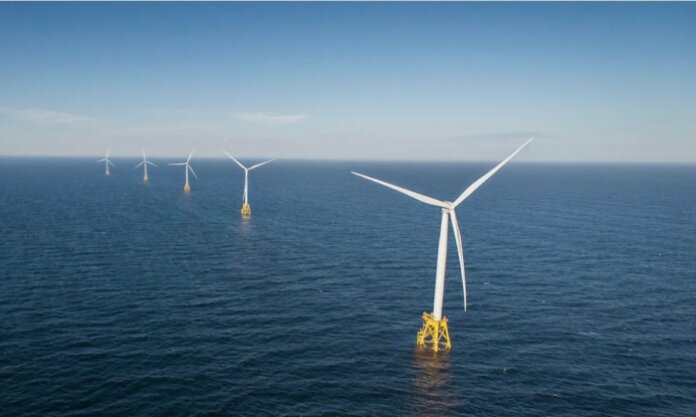Building on existing marine life protections, Ørsted has developed a new, lower-noise installation method that could potentially revolutionize the way offshore wind foundations are installed.
The groundbreaking new technology has been successfully tested in Germany, proving that this approach can dramatically reduce noise levels during foundation installations, strengthening existing protections to marine life and potentially paving the way for the next generation of monopile foundations.
Ørsted is already implementing a range of effective protective measures during offshore wind farm construction, including limiting the duration, intensity or extent of certain offshore construction activities. Examples of these mitigating measures include the deployment of bubble curtains or other noise barriers during traditional installation. The new installation method allows Ørsted to further reduce the potential impact from construction activities on the marine environment and build in a more cost-effective way.
At the new German offshore wind farm Gode Wind 3, Ørsted has successfully tested an installation method on three monopile foundations. The noise mitigation method involves a patented jetting technology attached to the monopile, which lowers the resistance of the surrounding sandy soil, effectively allowing the foundation to sink into the seabed — completely replacing conventional installation methods such as pile driving.
Implementation of the new installation technology has resulted in a substantial decrease in underwater noise levels: With a reduction of 34 decibels relative to the most commonly used installation method, and without additional mitigation, noise levels were reduced by over 99 % to a level just marginally above the ambient noise found in the German Bight in the North Sea.
Beyond noise reduction, this new technology is a change in offshore wind monopile installation that, once adopted at scale, can provide for more efficient and cost-effective installations of offshore wind foundations. Already installed are 11-MW wind turbines on top of the foundations, and Gode Wind 3 is expected to start commercial operation later in 2024.
“Ørsted has been at the forefront of offshore wind innovation and marine protections for 30 years, and we continue to push the envelope on new innovative solutions,” says Patrick Harnett, executive vice president and chief operating officer at Ørsted. “This new technology is a potential game-changer for how we build offshore wind. Once industrialized, it could not only be cheaper, faster and far quieter — without additional mitigation — than any other monopile installation technology, it also has the potential to make next-generation foundations lighter as they won’t need to be designed for conventional installation process.”
This is the first time a jetting technology has been used to install full-size monopile foundations, making the tests a milestone for the industry. Ørsted carried out the installation together with Jan De Nul Group and its installation vessel Les Alizés, as well as contractor Aarsleff.
Ørsted has been developing the technology over the past years and is now exploring how to introduce the technology into the future pipeline, which includes assessing the feasibility of the method on more complex ground conditions than the pure sand conditions found at the Gode Wind 3 site. Further regulatory approvals will also be needed before the technology can be implemented in other markets globally.




